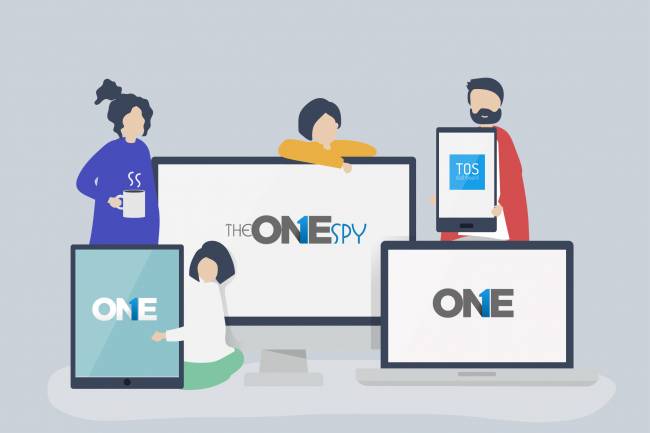How Does Automotive Software Work?
Automotive software refers to the software systems and applications used in vehicles to control various functions and provide advanced features and functionalities. It encompasses the software that runs on the vehicle's electronic control units (ECUs), onboard computers, and other computing devices integrated into modern automobiles. Automotive software plays a crucial role in the operation, performance, safety, and entertainment aspects of vehicles.
Key Features of Automotive Software Development
When it comes to automotive software development, several key features and considerations are essential to ensure the creation of reliable, efficient, and safe software systems. Here are some of the key features:
-
Safety and Reliability: Automotive software must prioritize safety and reliability as it directly impacts the operation of critical vehicle systems. Developers must adhere to strict safety standards and guidelines to ensure that the software functions correctly, performs as expected, and mitigates potential risks.
-
Real-time Performance: Automotive software often requires real-time performance capabilities to ensure timely and accurate responses to inputs and events. This is crucial for systems such as engine control, braking, and collision avoidance, where even slight delays can have significant consequences. Efficient algorithms, optimized code, and hardware considerations play a vital role in achieving real-time performance.
-
Integration and Compatibility: Automotive software must be designed to seamlessly integrate with other vehicle components, hardware interfaces, and existing systems. It should be compatible with various hardware platforms and comply with industry standards to enable interoperability and ease of integration during the manufacturing process.
-
Connectivity and Communication: With the rise of connected vehicles, automotive software development involves incorporating connectivity features. This includes support for wireless communication protocols (such as Bluetooth, Wi-Fi, and cellular networks) to facilitate interactions with external devices, networks, and cloud-based services.
-
User Interface and User Experience: Automotive software should have intuitive user interfaces (UI) and deliver a positive user experience (UX) for drivers and passengers. The UI/UX design should be user-friendly, easy to navigate, and provide relevant information and controls. It should consider factors such as driver distraction, legibility, and accessibility.
-
Security: As vehicles become more connected and software-dependent, cybersecurity becomes a critical aspect of automotive software development. The software must incorporate robust security measures to protect against potential threats and vulnerabilities, including secure communication protocols, encryption, authentication mechanisms, and intrusion detection systems.
It's important to note that automotive software development is a complex and collaborative process that involves various stakeholders, including software engineers, electrical engineers, mechanical engineers, and domain experts. Close collaboration and adherence to industry best practices are essential to developing high-quality automotive software.
How Does Automotive Software Work?
Automotive software works by integrating with the electronic control units (ECUs) and other computing devices present in modern vehicles. These software systems are designed to control and manage various aspects of the vehicle's operation, including engine management, braking, steering, infotainment, and safety features. Here's a high-level overview of how automotive software works:
-
Software Architecture: Automotive software is built using a layered architecture. At the lowest level, there are firmware and low-level software components that directly interact with the hardware, including sensors, actuators, and ECUs. On top of the hardware layer, there are middleware components that provide communication and integration between different software modules. Finally, there are application-level software components that handle specific functionalities such as engine control, infotainment, or ADAS.
-
Sensor Input: Automotive software relies on a network of sensors strategically placed throughout the vehicle. These sensors collect data about the vehicle's environment, performance, and internal systems. Examples include wheel speed sensors, temperature sensors, cameras, radar, lidar, and GPS. The software processes and interprets the sensor data to make decisions and control the vehicle's systems.
-
Control Algorithms: Automotive software utilizes control algorithms to process the sensor data and determine appropriate actions. For instance, in engine management, the software analyzes sensor inputs and calculates fuel injection timing, air-fuel mixture ratios, ignition timing, and other parameters to optimize engine performance and fuel efficiency. Similarly, in ADAS, the software uses sensor inputs to detect objects, analyze road conditions, and provide warnings or initiate corrective actions.
-
Communication and Integration: Automotive software enables communication and integration between different ECUs and computing devices within the vehicle. This facilitates coordinated operation and exchange of information between various systems. For example, the engine control unit communicates with the transmission control unit, allowing seamless coordination between the engine and transmission for efficient power delivery.
-
User Interface and Interaction: Automotive software provides user interfaces to enable interaction between the driver or passengers and the vehicle's systems. This includes instrument clusters, infotainment touchscreens, voice commands, and other control interfaces. The software processes user inputs and presents information to the users in a visually appealing and intuitive manner.
-
Data Storage and Logging: Automotive software often includes data storage and logging capabilities. It can store important vehicle data, such as diagnostic information, fault codes, sensor readings, and event logs. This data is valuable for troubleshooting, maintenance, and analysis.
-
Over-the-Air Updates: Many modern vehicles support over-the-air (OTA) updates, allowing manufacturers to remotely update the vehicle's software. OTA updates provide bug fixes, security patches, performance enhancements, and new features. The software checks for updates, downloads, and installs them, ensuring the vehicle's software remains up to date.
-
Safety and Fail-Safe Mechanisms: Automotive software incorporates safety measures and fail-safe mechanisms to ensure the overall reliability and safe operation of the vehicle. This includes redundant systems, error checking, fault tolerance, and fallback strategies in case of software or hardware failures.
Automotive software development involves a combination of programming languages, software engineering principles, real-time systems considerations, and compliance with industry standards and regulations. The software undergoes rigorous testing, validation, and certification processes to ensure its reliability, safety, and compliance with relevant standards.
Conclusion:
In conclusion, automotive software plays a crucial role in modern vehicles, enabling control, functionality, safety, and connectivity. It integrates with electronic control units (ECUs) and computing devices within the vehicle to manage various systems, such as engine control, braking, steering, infotainment, and advanced driver assistance systems (ADAS).
Author Bio
Jitendra Jain is the CEO and Co-founder of Inventcolabs - App, web & mobile app development company. He is among the most endeavoring leaders in the space of advanced computing and information technology. He has been at the forefront of the tech innovation taking place at Inventcolabs, and his domain insights, ideas, and viewpoints on the latest IT trends and traits impact change through his words and works in motion.












